
Last weekend was unbearably, swelteringly, HOT in DC. I swear if I ever become a man of means, I will buy myself a summer getaway in Maine, on a high cliff overlooking the ocean, like the Collinwood estate in Dark Shadows. I may even walk the beach on gray days like Joan Bennett.
That day is not very likely any time soon, so, to fight the heat in DC this weekend, I went where I am most comfortable: The Theater.
Over at Studio, they are reviving (and re-imagining) a notorious flop called Legends! (note the exclamation point; it's that kind of show). I have never seen this play, hardly anyone has, though it has a wild reputation among theatre folks. The original production back in the mid-80s was a high-profile disaster starring Mary Martin and Carol Channing, which toured the country, trying to make it to Broadway (it never did).

The story of that tour is hilariously and harrowingly told by the playwright James Kirkwood in his memoir, Diary of a Mad Playwright. After seeing Studio's production of Legends! on Saturday, I pulled the book off the shelf and read it again (it's a quick and fascinating read for anyone in the theatre).
As I said, over at Studio, they've done some re-imagining. According to Kirkwood's book, when director extraordinaire Mike Nichols was first approached to direct the original, he suggested that the two central roles be played by drag queens. Nichols did not end up directing the play, and
 Kirkwood refused that idea outright anyway. Now that the playwright is dead, his estate gave permission for John Epperson to tinker with the play, and to allow Nichols's suggestion to become a reality. At Studio, the roles originally played by Carol Channing and Mary Martin are being played by men in drag. You probably won't be surprised to learn that it works pretty darn well that way, considering that Channing and Martin are often the targets of drag queens.
Kirkwood refused that idea outright anyway. Now that the playwright is dead, his estate gave permission for John Epperson to tinker with the play, and to allow Nichols's suggestion to become a reality. At Studio, the roles originally played by Carol Channing and Mary Martin are being played by men in drag. You probably won't be surprised to learn that it works pretty darn well that way, considering that Channing and Martin are often the targets of drag queens. I had a great time at this show, whose star is a gent of whom I am unfamiliar, James Lecesne. He is an actor and writer of note (he penned the Oscar winning short film, Trevor, which coincidentally starred a college chum of mine), and he tears up the stage in the Channing role. The Martin role is being played here by the adaptor, John Epperson, who is better known as Lypsinka. In fact, he is SO well-known as Lypsinka that he is co-billed as "a.k.a Lypsinka." Well, whatever, he's pretty funny in his role as well, though I have a hunch (in fact, I know, having just
I had a great time at this show, whose star is a gent of whom I am unfamiliar, James Lecesne. He is an actor and writer of note (he penned the Oscar winning short film, Trevor, which coincidentally starred a college chum of mine), and he tears up the stage in the Channing role. The Martin role is being played here by the adaptor, John Epperson, who is better known as Lypsinka. In fact, he is SO well-known as Lypsinka that he is co-billed as "a.k.a Lypsinka." Well, whatever, he's pretty funny in his role as well, though I have a hunch (in fact, I know, having just finished Kirkwood's book) the playwright meant the cat fight which is the climax of the first act to be quite rough-and-tumble, with the glamorous ladies snatching each others' wigs off. With men playing the roles, the wig-snatching was not feasible, so the sequence came off pretty tame. This particular scene of the play fell flat for me. It really doesn't work unless the two actors go for broke.
finished Kirkwood's book) the playwright meant the cat fight which is the climax of the first act to be quite rough-and-tumble, with the glamorous ladies snatching each others' wigs off. With men playing the roles, the wig-snatching was not feasible, so the sequence came off pretty tame. This particular scene of the play fell flat for me. It really doesn't work unless the two actors go for broke.
But I had a good time overall, and this piece may have a future among theatre troops who are attracted to plays in which men play women (Irma Vep and the Tuna plays, for example). There were several other actors in the play, including Tom Story, whom I have seen many times on local stages. Here, he is playing the sleazy producer who tries to get his two legends to star in his play. According to James Kirkwood's memoir, the gent who played this role in the original stole the thing. That actor was a young Gary Beach, who went on to create the role of Lumiere (the candlestick) in Broadway's Beauty and the Beast, and later won the Tony as Roger deBris in The Producers.
Have I wandered off-topic? Must be the heat.

On Sunday, the heat was even more unbearable, so I chose to drop into a matinee in probably the worst ventilated theatre in town. I knew that going in, as I worked at Church Street Theatre myself, though it was in December, so the lack of adequate air conditioning wasn't a problem. On Sunday, the almost-full audience was sweating up a storm at the matinee. Though Church Street Theatre is named after the street upon which it sits, it really does look like a church which has been gutted on the inside and built into a proscenium theatre (by someone who did not know what they were doing).

The ceiling over the audience is extremely high and difficult to cool. The theatre itself is very difficult to perform in, as there is no access to the stage except through the house. There are two tiny dressing rooms tucked underneath the audience , and when there is a large cast performing, the remainder of the actors dress downstairs in the boiler room. Welcome to Live Theatre!
Anyway, the Keegan Theatre has taken charge of Church Street full-time. They are a primarily non-Equity company, but are employing two Equity actors in their current production of A Man of No Importance, both of
 whom shine. By the wildest coincidence, they are both friends of mine, or at least colleagues. For quite a few years, Buzz Mauro and Deb Gottisman hired me to teach movement to their teen students during the summer training program they created, The Theatre Lab. I haven't done so in a long while, and meanwhile, their organization has expanded, and even has its own building downtown. These two are go-getters, actors who created their own work. Gotta love that.
whom shine. By the wildest coincidence, they are both friends of mine, or at least colleagues. For quite a few years, Buzz Mauro and Deb Gottisman hired me to teach movement to their teen students during the summer training program they created, The Theatre Lab. I haven't done so in a long while, and meanwhile, their organization has expanded, and even has its own building downtown. These two are go-getters, actors who created their own work. Gotta love that.
In A Man of No Importance, Buzz takes the leading role of an Irish bus conductor who runs an
 amateur theater group. Deb plays the supporting role of one of the amateur actors; she swipes every scene in which she carries focus. As for the piece itself, it has been a favorite of mine since I ran across it years ago. Its premiere production was at Lincoln Center; I saw a scaled-down production in Annapolis several years ago (it was that production which made me fall in love with the piece). While watching Keegan's version, I began to notice some small flaws in the
amateur theater group. Deb plays the supporting role of one of the amateur actors; she swipes every scene in which she carries focus. As for the piece itself, it has been a favorite of mine since I ran across it years ago. Its premiere production was at Lincoln Center; I saw a scaled-down production in Annapolis several years ago (it was that production which made me fall in love with the piece). While watching Keegan's version, I began to notice some small flaws in the  structure, flaws I had not noticed before. Our hero, Alfie, hides a secret, you see, but we get no hint of it until well into Act One. In the meantime, we get several solo numbers from various supporting characters, and a lot of time is spent with the amateur theater group. I enjoyed all those moments, but I bet civilians in the crowd may tire of seeing so much stage time devoted to this troop trying to put on a play.
structure, flaws I had not noticed before. Our hero, Alfie, hides a secret, you see, but we get no hint of it until well into Act One. In the meantime, we get several solo numbers from various supporting characters, and a lot of time is spent with the amateur theater group. I enjoyed all those moments, but I bet civilians in the crowd may tire of seeing so much stage time devoted to this troop trying to put on a play. It's when Alfie's big secret is revealed that the meat of the play begins. Buzz fits this role perfectly, and finely underplays his tortured soul. When he's in charge of the score, the music is terrific. I found some of the other solos, and group numbers for that matter, to be strangely muted. Perhaps the fact that the live band is situated far above and behind the action left me with that impression. John Robert Keena, who plays the galoot who is the object of our hero's affection, does a swell job with his big solo in act one, (I could have done without all the cris-
It's when Alfie's big secret is revealed that the meat of the play begins. Buzz fits this role perfectly, and finely underplays his tortured soul. When he's in charge of the score, the music is terrific. I found some of the other solos, and group numbers for that matter, to be strangely muted. Perhaps the fact that the live band is situated far above and behind the action left me with that impression. John Robert Keena, who plays the galoot who is the object of our hero's affection, does a swell job with his big solo in act one, (I could have done without all the cris- crossing of the ensemble members behind him, but that's a directorial choice. The song is called "The Streets of Dublin," so they were going for a semblance of a buzzing metropolis. I'm probably the only one who finds that kind of thing distracting...ah, well.)
crossing of the ensemble members behind him, but that's a directorial choice. The song is called "The Streets of Dublin," so they were going for a semblance of a buzzing metropolis. I'm probably the only one who finds that kind of thing distracting...ah, well.)I love this show, and confess that A Man of No Importance is on my wish list of roles to play before I get too...um...mature. It's a large-scale musical, and it's pretty unusual that two local theatre companies have tackled it in recent years. Chances are fading that I'll ever get to play that man in the mirror...
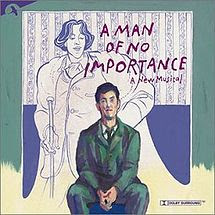
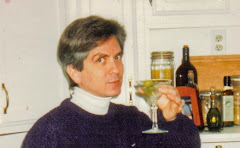
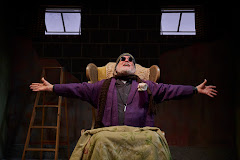




























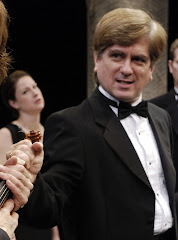
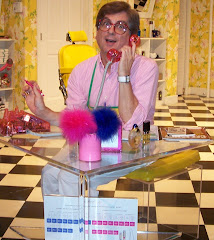
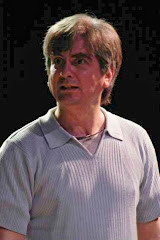
,+Olney+Theatre+Center,+2004.jpg)


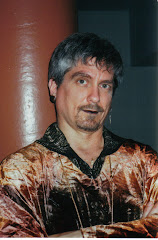
,+Shakespeare+Theatre+Company,.jpg)
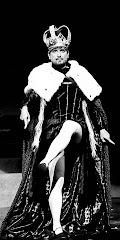

,+Warehouse+Theatre,+1999.jpg)
,+Are.jpg)
,+Everyman+Theatre,2002.jpg)
,+First+Nationa.jpg)
,+Shakespeare+Theatre+Company,.jpg)


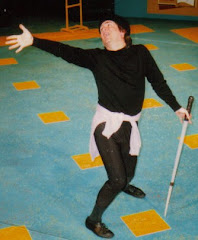
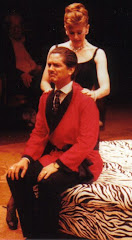
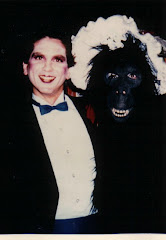
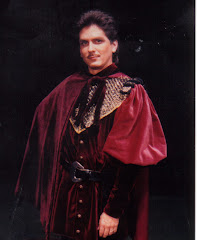
,+Granada+Th.jpg)
,+Globe+Playhouse,.jpg)
,+CSUN,+1976.jpg)
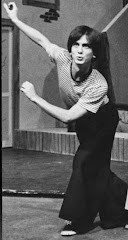


No comments:
Post a Comment